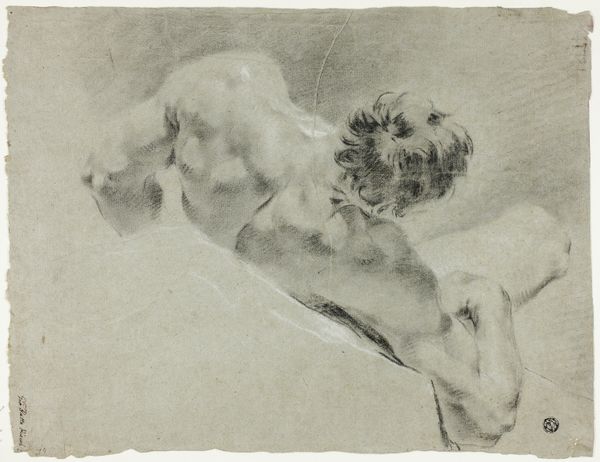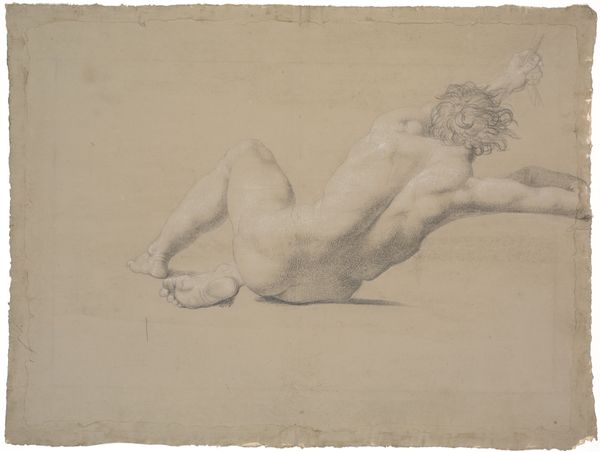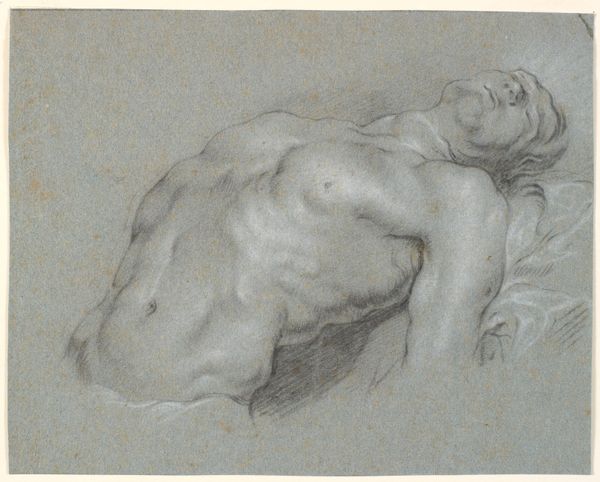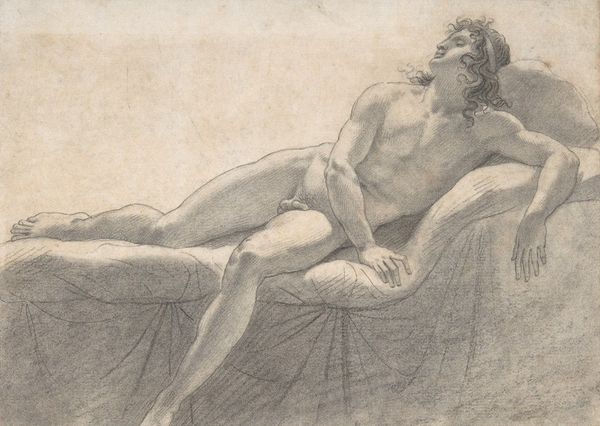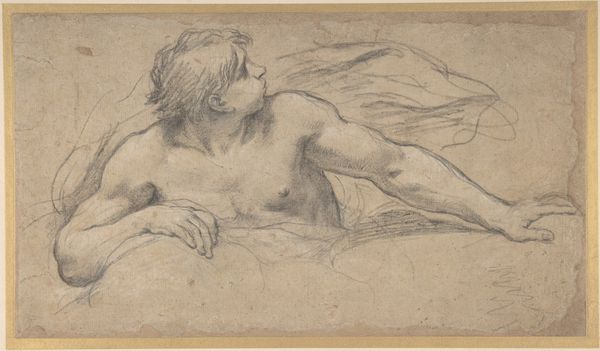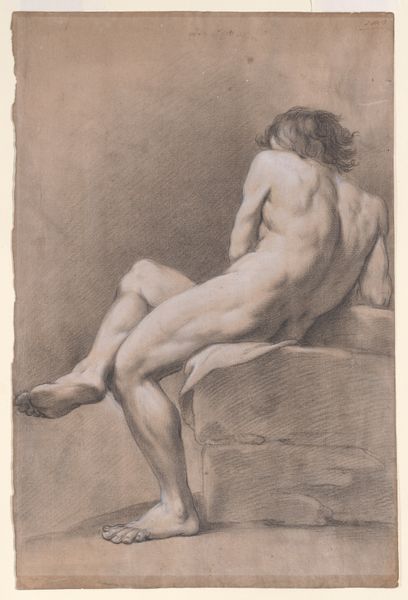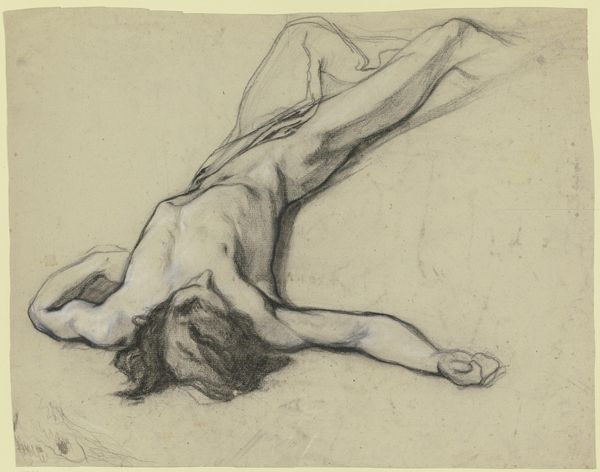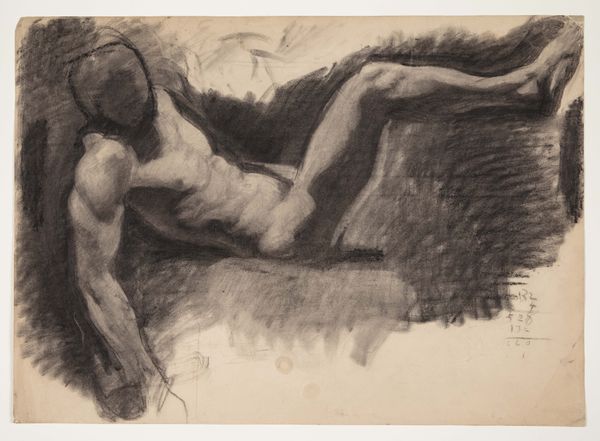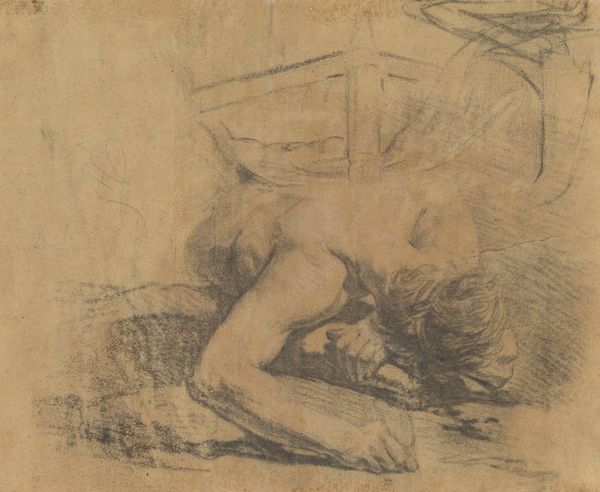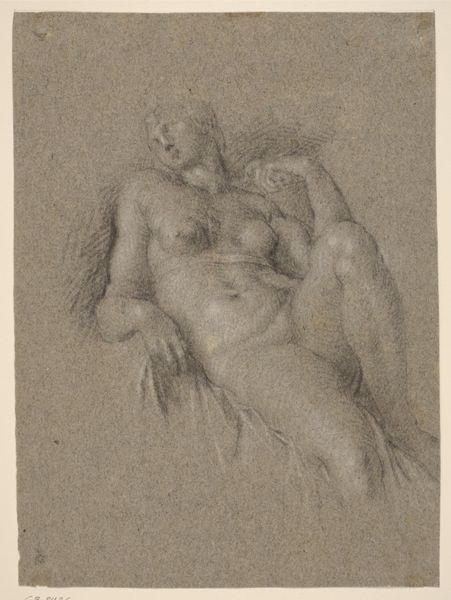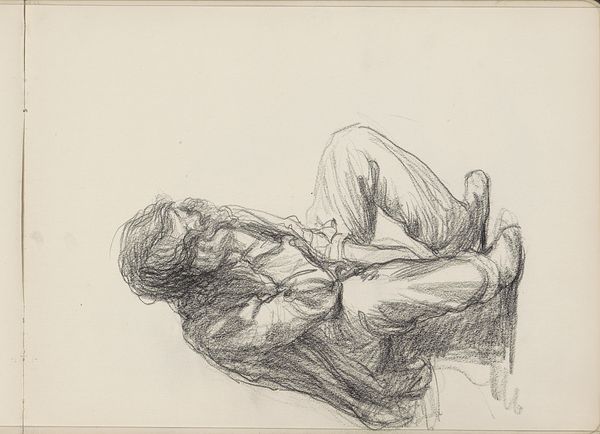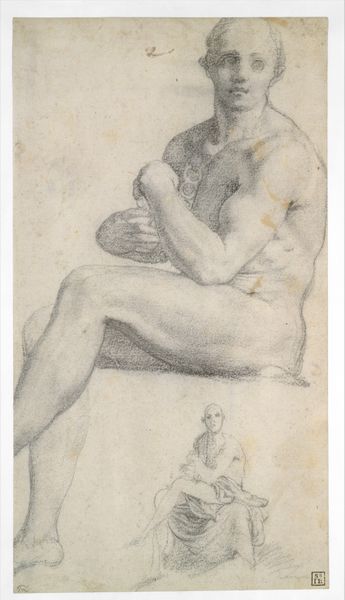
Overkroppen af siddende model. Armene krydset. Hovedet halvskjult af venstre hånd 1778 - 1809
0:00
0:00
drawing, charcoal
#
drawing
#
charcoal drawing
#
portrait drawing
#
charcoal
#
academic-art
Dimensions: 425 mm (height) x 578 mm (width) (bladmaal)
Curator: Here we have a charcoal drawing, dated between 1778 and 1809. The artwork's official title translates to “Upper body of a sitting model. Arms crossed. The head half-hidden by the left hand.” It resides here at the SMK, Statens Museum for Kunst. Editor: Immediately, the tenebrism strikes me—that stark contrast between light and shadow. The anonymous artist captures an emotional weight; the model seems almost engulfed in grief. Curator: Absolutely, the drama evokes strong feelings. Bear in mind this period, the late 18th, early 19th century—a time when art was instrumental in constructing notions of heroism and tragedy in alignment with enlightened ideals, even during turbulent socio-political periods like the French Revolution. Editor: Focusing on pure form, notice how the composition is a closed loop. The curve of the spine mirrors the arch of the arms. This compact structure, along with the shadowed face, forces us inward, into the figure's personal space. It makes one consider the nature of his despondency. Curator: The artist probably drew from life at an academy. Academic art served to reinforce classical values through studies of anatomy and posed models. These idealized representations upheld norms within society and the art world itself. Editor: The medium – charcoal – is essential. The velvety texture and tonal gradation build up a remarkable three-dimensionality. See how the light glints on the upper arm creating volume; the artist uses darkness to conceal as much as reveal. It is about visual poetry not perfection of rendering. Curator: Beyond technique, the drawing reveals how bodies themselves can become sites where socio-cultural expectations get projected and performed through the artistic process within institutional confines. Editor: Looking closely at this poignant depiction through both formal composition and historical setting gives a deeper, richer insight into not only art history but also to our interpretation and experience of the human form. Curator: Indeed, considering its making in an educational context also raises fundamental issues around what constitutes an "ideal" figure at a particularly charged historical moment, shaping perceptions we might unknowingly continue even today.
Comments
No comments
Be the first to comment and join the conversation on the ultimate creative platform.

